
Cenbe's Commodore 64 Software Page
(last updated 2021-12-05)
 |
Cenbe's Commodore 64 Software Page(last updated 2021-12-05) |
 |
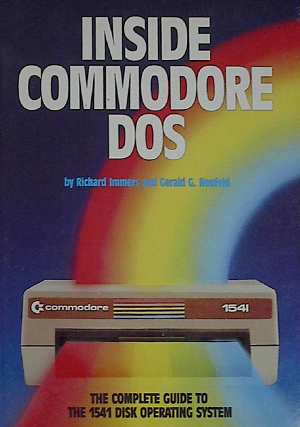
The classic text for learning the 1541 disk drive...
and I got
mine autographed
at World of
Commodore!
Here is some of the more interesting software and articles from my collection (there is also a GEOS page and an operating systems and programming languages page). The disk images are generally in D64 or D81 format; you can transfer the images back and forth to a real Commodore disk drive with the excellent ZoomFloppy device (see articles by Peter Schepers and Ruud Baltissen for details of the image formats). Since I've never owned a 128, all the software is for the C64 unless otherwise noted. If there's something in particular you're looking for, you can email me (cenbe at protonmail dot com) for help finding it.
Tools for Learning and Cracking Copy Protection
Articles About the Relative File Bug
Utilities (including terminal programs)
Odds & Ends
The best place to start learning is Inside Commodore DOS by Immers & Neufeld. It starts by taking you through the superficial structure of a disk, and eventually leads up to more complex subjects like GCR encoding. The last half of the book is a detailed commentary on the 1541 ROMs, although without a disassembly. The best way to learn Commodore DOS is to combine that with the actual disassembled code, which you can find in The Anatomy of the 1541 Disk Drive, one of the many excellent Commodore books that were published in the US by Abacus Software.
This is a PDF of the presentation on copy protection I gave at World of Commodore 2007. It gives an overview of protection methods, with drive code samples for common tasks like reading/writing sync and data, switching density, stepping the head, &c. There are also a couple of protection disassemblies.
Disk/Extramon and Megamon These are some very good memory-resident machine language monitors (debuggers). Megamon has a single-step feature (unusual in memory-resident monitors); Disk/Extramon was featured in Transactor magazine Volume 05, Issue 06 and has excellent facilities for exploring the memory of the 1541 drive as well as that of the C64. Documentation files are on the disk, but here's the Megamon help file as a PDF.
ZipCode V2 is one of the best all-around disk utility sets for the Commodore 64, and contains programs for disk exploration, file copying, formatting, directory arranging, and more. This disk image includes four Zip-Code files; load and run "UNZIP V2" and follow the instructions to decompress it to a fresh diskette. There's also this interesting disk, which includes some obscure variations of ZipCode (and comes complete with an old-school intro screen!).
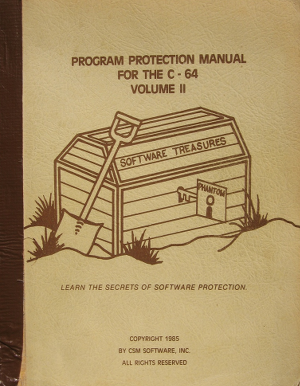
Here it is: the one, the only (click for a larger view).
The CSM Program Protection Manuals, long considered fabulously rare, have now been scanned for posterity. Volume II is legendary for its discussion of advanced copy protection topics, including extra sectors, spiral tracking, altered density, and more.
CSM Program Protection Manual, Volume I This is the manual itself, scanned to a PDF (thanks to Christian Lott for getting it down to a reasonable size), and here's an image of the disk that goes with it. You may notice a passage in the manual that says "The directory of the disk has been modified to prevent you from listing it... other modifications have been made. See if you can find them all." I have done my homework, and here is a working copy of the disk.
CSM Program Protection Manual, Volume II This book, which runs to almost 300 pages, is one of the bibles of copy protection, from basics to advanced. And here is an image of the disk that goes with it, which consists mostly of code examples from the book. The assembler sources are in BASIC program format, so load 'n' list to read them.
KrackerJax Revealed was a series of three booklets explaining how the fine folks at KrackerJax broke the protection on so many titles and how the protections worked (including custom disk formats like V-MAX! and RapidLok). The booklets were later released as a trilogy (PDF of all three volumes).
KrackerJax Revealed Volume I. This is the disk that came with Volume I.
KrackerJax Revealed Volume II This disk includes the RapidLok copiers.
KrackerJax Revealed Volume III This disk features the Hackers Utility Kit, a set of extremely powerful disk utilities including a GCR editor (hit H for the help screens in the GCR editor, or see page 149 ff. in the PDF).
GEOS Busters 4.0, also from KrackerJax. The disk label says "Click in geosbusters v4.0 from GEOS(tm) desktop. View or print documentation file from geoWrite(tm)". In most cases, you'll want to use Maverick instead (see below).
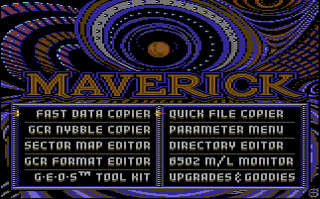
Maverick menu screen
Here is a link to the documentation, scanned by DLH. Maverick 5.03 was released on four disks, three of which were flippies:
Parameter Upgrades, side B Note
that there is no directory on side B.
Here are some links to articles about the infamous Commodore DOS bug involving relative files. Relative files are very powerful, and you shouldn't be afraid to use them if you know the workaround.
Beyond Raid also contains references to some other articles on relative files.
George's code and articles have since been uploaded to GitHub.
The CMD utilities can be found on the CMD DOS Primer page.
Long ago in the days of our ancestors, before ZIP and JAR, there
was ARC, an archiver/shell that was the Swiss army knife of its
day. This disk image
contains ARC, its documentation, and ARC-SDA, a program
used to create self-dissolving ARC files (SDA
files decompress automatically when they are loaded and run). This
copy of ARC-SDA looks like it was created with ISEPIC, so start it
with the command LOAD "ARC-SDA V4.6",8,1. The
ARC-SDA docs are also on this image.
Here's a disk image containing various more obscure archiving utilities, including V15 of the infamous Lynx as well as Unzip, Arkive, Sq and Usq.
Q-Link had an all-purpose file decompression and conversion utility called Omega-Q.
Looking for a good copy program? This English translation of the German Commander 64 program (D64 disk image) can browse and copy files between a wide variety of Commodore devices, including the CMD devices and the uIEC (with partitions and subdirectories). Here are some brief docs.
Super Aide is a set of BASIC programming utilities,
including renumber, autonumber, find and replace, append,
bi-directional scroll, variable list, etc. Side A contains the utility
itself; side B contains the docs (run the
documentation reader for full details). Note: if you are running Super Aide on a machine with JiffyDOS, you'll want to turn off the wedge and function keys first with @Q and @F.
SuperSnapshot is one of the best utility cartridges ever made, but by the time it had reached version 5, the code didn't all fit in the cartridge and some menu entries asked you to "insert system disk". Here are D64 images of side A and side B of that disk. If you are looking for a SuperSnapshot, Joe Palumbo still sells them; the manual is available at Project64.
Here are side A and side B of the demo/utilities disk for the CLD Super 1750 Clone cartridge. It's essentially the same as the 1750 utility disk, and includes the spinning globe and pulsating pound-sign demos. See the "Odds & Ends" section for the "El Gato" demo.
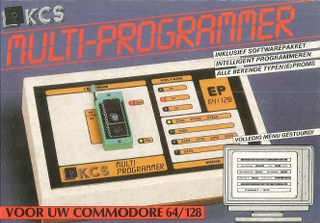
KCS Multi-Programmer cover
Novaterm 9.6c is one of the best terminal programs for the Commodore 64, and here's a disk image with a bunch more, including X-Term, Touchterm, CCGMS 5.5, and Laser Term. And for those times when you've just got to connect your Commodore to an IBM mainframe, here's Kermit-65, with documentation files (I've also converted them to ASCII and combined them into a single file). It includes the special driver for the BI-80 (an 80-column card for the C64). A custom character ROM for the BI-80 was made available by Dr Evil Labs so it would do proper VT-100 emulation; here is a D64 containing a ROM image, and here is a PDF of the instruction sheet.
This is a D81 image of the KrackerJax 1581 Toolkit, and here's the manual, scanned by the indomitable DLH.
If you have a Promenade C1 (user port EPROM programmer) and need the disk, here it is. And here's the manual in text format.
A visitor from the Netherlands sent me the docs and software for the KCS EPROM programmer (docs are in Dutch). Thanks!
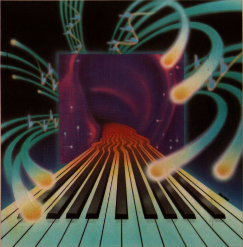
3001 Sound Odyssey
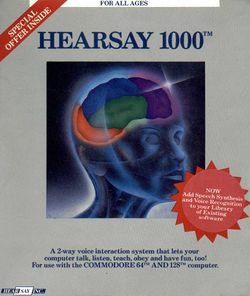
Hearsay 1000
3001 Sound Odyssey (D64 image with copy protection removed), was released by Sight & Sound in 1984, and is a good way to learn the ins and outs of the SID chip's settings. There are also about 100 preset combinations of the three voices that are a lot of fun, and you can use your keyboard to play on. (This is the software whose companion product is the "Incredible Musical Keyboard", a piano-style keyboard that fits over top of the C64's keys.) Here's the instruction booklet scanned to a PDF document.
COMPOSER is a set of utilities for manipulating pitch classes in serial music (based on a book by Charles Wuorinen). It's by Randy Winchester of Antigrav fame (who knew?).
If you've got a Hearsay 1000 voice recognition system, here's the disk that came with it.
Abacus released an "expert system" database called XPER in 1985. Here's a G64 of the program disk (there are data on tracks 37-40), and here's the manual.
This is Commodore's Micro Astrologer, and here are the docs as a PDF. I cracked the protection myself (three sets of NOPs to defeat the protection check, then re-encrypt the portion of memory read from the loader's first sector and write it back to disk). This program is a good introduction to the Ancient Art for those who are interested.
Here's the El Gato REU page-flipping demo; it does a smooth animation of a cat walking while turning the frame over from right to left with the perspective changing. You may want to turn off everything but drive 8.
I recently stumbled across a copy of Abacus' TAS ("Technical Analysis System"), a software package for tracking the stock market. It's lightly protected, and ZipCode SixPack was able to make a copy of it. Here are D64 images containing files 1-3 and 4-6. This is the disk for the online program, which doesn't appear to be protected. I also picked up the Dow Jones News/Retrieval package, if anyone's interested.
DATA20 made some 80-column adapters for the '64; this is the system disk that came with their "XL 80", and includes some productivity software written for it.